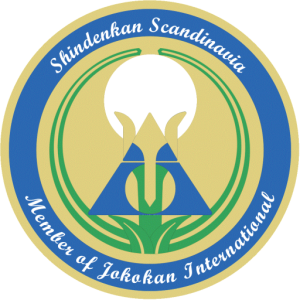By the Director team, Jokokan Honbu
On the 2nd and 3rd Saturday in January, the new decade was inaugurated with Shindenkan's Tai Chi course package 1.
Tai Chi is a traditional Chinese martial art system that is used in Shindenkan as a self-training tool to support Yakami Shinsei-Ryu Karate-do through learning about oneself both physically, mentally and spiritually. The tool Tai Chi Chuan – Peking Style, also called the 24 movement form, is one of the 3 internal styles of Chinese martial arts: Pakua, Hsing-i and Tai Chi Chuan. All 3 styles are also on Shindenkan's course programme.
There were 26 participants registered for this course, who had to brave the Danish winter cold. The instructors on the course were Kjeld Renshi-Dai and Martin Renshi-dai.
The first day of the course started with a short theory with an introduction to the history of Tai Chi and the different main styles within Tai Chi. In typical Chinese style, Martin began Renshi-dai with the legend of the Sage Zhang, who could walk 500km in one day, when he was not busy discussing the old Taoist classics with the other wise wanderers.
After a quick review of the main styles at Kjeld Renshi-dai, it was off to the training room, where we warmed up and did breathing and sensitivity exercises before we started the form itself.
The first half of the Tai Chi form was reviewed, and along the way many of the participants had to admit that even if you do exercises in "slow motion" it does not mean that it gets easier, and that Tai Chi may be soft on the outside, but that it is iron-hard. inside.
The flowery descriptions of the techniques, such as "parting the wild horse's mane", "brushing the knee" and "grabbing the bird's tail" turned out to be so vivid that it was a real help in visualizing the movements, and thus performing them correctly.
The day ended with introductory Push Hands exercises, to understand and test the techniques, as well as Qi Gong, standing like a tree - an exercise they are notorious for and where you can stand for 15 minutes or more. Here we stood for 5 minutes and that seemed to be enough for most people.
The week after, everyone showed up again, for a rehearsal, as well as the second half of the form. This time too, everyone, including JokoKidz, went on with crooked necks, and soon the drops of sweat lined their foreheads,
The second half contains significantly greater challenges to the ability to balance, and exercises such as "Move hands like clouds", "Kick with left heel", "Sweep down to the side on one leg" and "The needle at the bottom of the sea" set the agenda. The distinction between full and empty became decisive for whether the balance and technique held.
It was clear to see that there had been diligent practice in the intervening week, and the course participants sometimes became so distant in their gaze, and immersed in the techniques, that everyone could see that both physics, psyche and spirituality were involved in the exercises with a focus on: Breathing, Power transmission, Concentration – Focus – Centering and Slow fluid movements
It is clear that everyone enjoyed "starting up slowly" after the New Year, even though it was precisely the challenge and that everyone gained the increased understanding of movement and power transmission that is precisely sought after with this training tool.
The Tai Chi course package 1 instructor team would like to thank all the participants for their enthusiasm and concentration on an early Saturday morning, and we hope that those who developed a need for a grandpa (afternoon nap) from the 3 hours of slow motion training had their needs covered.




